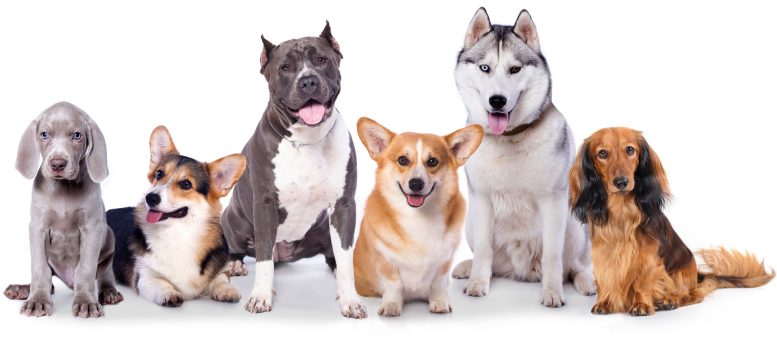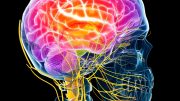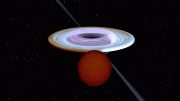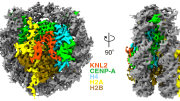
ADHD-like behavior naturally occurs in dogs.
A study involving some 11,000 dogs carried out at the University of Helsinki demonstrated that the gender, age, and breed of the dog, as well as any behavioral problems and certain environmental factors, are connected to hyperactive and impulsive behavior and inattention (ADHD).
“Our findings can help to better identify, understand and treat canine hyperactivity, impulsivity and inattention. Moreover, they indicated similarity with human ADHD, consolidating the role of dogs in ADHD-related research,” says Professor Hannes Lohi, head of a canine gene research group at the University of Helsinki.
“Dogs share many similarities with humans, including physiological traits and the same environment. In addition, ADHD-like behavior naturally occurs in dogs. This makes dogs an interesting model for investigating ADHD in humans,” says doctoral researcher Sini Sulkama.
Professor Lohi’s research group collected data on more than 11,000 dogs by conducting an extensive behavioral survey. Hyperactivity, impulsivity, and inattention were examined using questions based on a survey utilized in human ADHD research. The goal of the study was to identify environmental factors underlying canine ADHD-like behavior and potential links to other behavioral traits.
The dog’s age and gender as well as the owner’s experience of dogs make a difference
“We found that hyperactivity, impulsivity, and inattention were more common in young dogs and male dogs. Corresponding observations relating to age and gender in connection with ADHD have been made in humans too,” says Jenni Puurunen, PhD.
Dogs who spent more time alone at home daily were more hyperactive, impulsive, and inattentive than dogs who spent less time on their own.
“As social animals, dogs can get frustrated and stressed when they are alone, which can be released as hyperactivity, impulsivity, and inattention. It may be that dogs who spend longer periods in solitude also get less exercise and attention from their owners,” Sulkama muses.
The researchers discovered a new link between hyperactivity and impulsivity, and the owner’s experience with dogs, as the two traits were more common in dogs who were not their owners’ first dogs. The causality of this phenomenon remains unclear.
“People may pick as their first dog a less active individual that better matches the idea of a pet dog, whereas more active and challenging dogs can be chosen after gaining more experience with dogs,” explains Sulkama.
Significant differences between breeds
Breeding has had a significant effect on the breed-specific behavior of different dog breeds. Differences between breeds can also indicate genes underlying the relevant traits.
“Hyperactivity and impulsivity on the one hand, and good concentration on the other, are common in breeds bred for work, such as the German Shepherd and Border Collie. In contrast, a more calm disposition is considered a benefit in breeds that are popular as pets or show dogs, such as the Chihuahua, Long-Haired Collie, and Poodle, making them easier companions in everyday life. Then again, the ability to concentrate has not been considered as important a trait in these breeds as in working breeds, which is why inattention can be more common among pet dogs,” Professor Lohi says.
Link to other behavioral problems
The study confirmed previously observed interesting links between hyperactivity, impulsivity, and inattention, and obsessive-compulsive behavior, aggressiveness, and fearfulness. ADHD is also often associated with other mental disorders and illnesses. For example, obsessive-compulsive disorder (OCD) often occurs in conjunction with ADHD. In dogs, OCD-like obsessive-compulsive behavior can appear as, among other things, tail chasing, continuous licking of surfaces or themselves, or staring at ‘nothing’.
“The findings suggest that the same brain regions and neurobiological pathways regulate activity, impulsivity, and concentration in both humans and dogs. This strengthens the promise that dogs show as a model species in the study of ADHD. In other words, the results can both make it easier to identify and treat canine impulsivity and inattention as well as promote ADHD research,” Sulkama sums up.
Reference: “Canine hyperactivity, impulsivity, and inattention share similar demographic risk factors and behavioural comorbidities with human ADHD” by Sini Sulkama, Jenni Puurunen, Milla Salonen, Salla Mikkola, Emma Hakanen, César Araujo and Hannes Lohi, 1 October 2021, Translational Psychiatry.
DOI: 10.1038/s41398-021-01626-x
This study was part of the Academy of Finland project investigating the epidemiology of canine behavior and related environmental and genetic factors and metabolic changes. This study was also supported by the European Research Council (Starting Grant), the ERA-NET NEURON funding platform and the Jane and Aatos Erkko Foundation.









Your just looking at instincts gone haywire. Humans do it too. OCD is jut old human instincts gone crazy. Its easy to understand and you don’t need a degree or a grant to understand.